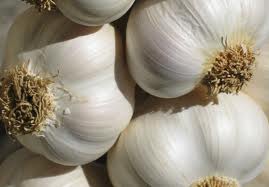Introduction to article : MRSA is an infection which is caused by the Staph aureus bacteria. What sets this form of staph apart from others is its immunity to most of the antibiotic drugs which are commonly used to treat staph. Because of this, MRSA can be fatal if not detect early. Even though this disease has a immunity, there are several ways it can be processed, accepting with a holistic approach.
Garlic has long been used as an antibiotic and for immune system health. Garlic has a component called allicin which is a general antibiotic and is effective against several different diseases and conditons. In order for garlic to be efficient against MRSA, it must be particularly processed as normal garlic processing makes it lose its anti-bacterial properties. If you are taking an anti-coagulant, you must speak to your physician before starting therapy as garlic can stop blood from clotting. Likewise, if you are allergic to garlic, you may want to consider another form of treatment.
Manuka is honey which is produced by bees gathering nectar from the manuka bush. While regular honey does have the power to help with bacteria, manuka has some extra benefits for patients of this dangerous disease. This type of honey has non-hydrogen peroxide antibacterial components so it is unaffected by any natural body processes which work to demolish hydrogen peroxide, making it more efficient for handling hurts. It has also been found to be highly effective against antibiotic resistant strains of diseases like MRSA. It does not lose potency when it is diluted. It is unaffected by heat and light and does not need oxygen to begin the healing process. At Last, this honey can diffuse deeply into tissue which will help it to get into areas which other topical solutions can't reach.
Essential oils are extracted from plants and are composed of hundreds of antifungal, antiviral, and antimicrobial elements. Because of the huge assortment of chemicals in these oils, bacteria have a hard time becoming immune to them, making them perfect for processing a disease like MRSA infection. These oils can be very potent and should only be used under the proper circumstances. In Front treating yourself with oils, talk to your doctor to find out which ones you should use and how much of them to take. The vast majority of these oils are used for aromatherapy and are not appropriate for use in this manner.



